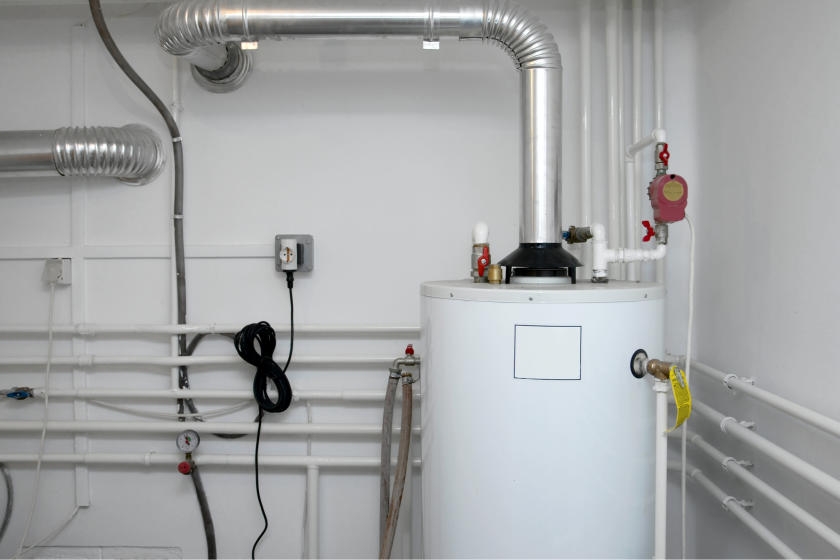The content directly below relating to How to Maintain Your Water Heater & Prolong its Life is definitely fascinating. Have a go and draw your own conclusions.

Hot water is crucial for everyday convenience, whether it's for a refreshing shower or cleaning recipes. To ensure your warm water system runs successfully and lasts longer, routine upkeep is key. This post provides practical suggestions and understandings on how to preserve your home's warm water system to avoid interruptions and pricey repairs.
Introduction
Preserving your home's warm water system might seem complicated, but with a few basic actions, you can ensure it operates smoothly for several years to come. This guide covers whatever from recognizing your warm water system to DIY maintenance ideas and recognizing when to call in professional assistance.
Value of Keeping Your Warm Water System
Regular maintenance not only prolongs the life-span of your warm water system yet also ensures it operates effectively. Ignoring upkeep can bring about decreased efficiency, higher energy expenses, and even early failing of the system.
Indicators Your Warm Water System Demands Upkeep
Recognizing when your warm water system needs attention can prevent major issues. Keep an eye out for signs such as inconsistent water temperature, strange noises from the heater, or rusty water.
Flushing the Water Heater
Flushing your water heater removes sediment buildup, boosting performance and lengthening its life.
Monitoring and Changing Anode Rods
Anode poles protect against deterioration inside the tank. Examining and changing them when broken is critical.
Facility Issues Requiring Professional Assistance
Examples include significant leakages, electric issues, or if your water heater is regularly underperforming.
Routine Professional Upkeep Conveniences
Expert maintenance can include thorough inspections, tune-ups, and making certain conformity with security requirements.
Inspecting and Adjusting Temperature Level Setups
Changing the temperature setups makes sure ideal performance and safety and security.
Do It Yourself Tips for Maintenance
You can perform numerous upkeep tasks yourself to maintain your hot water system in top problem.
Checking for Leaks
Regularly evaluate pipelines and connections for leakages, as these can cause water damage and greater expenses.
Comprehending Your Hot Water System
Prior to diving right into upkeep tasks, it's handy to comprehend the basic parts of your warm water system. Generally, this consists of the water heater itself, pipes, anode poles, and temperature controls.
Month-to-month Maintenance Tasks
Normal regular monthly checks can help capture minor concerns before they escalate.
Checking Pressure Alleviation Valves
Evaluating the stress relief valve guarantees it works appropriately and avoids excessive stress buildup.
Protecting Pipes
Protecting hot water pipes lowers warm loss and can conserve energy.
When to Call a Specialist
While DIY upkeep is advantageous, some problems call for expert expertise.
Conclusion
Routine maintenance of your home's hot water system is crucial for effectiveness, long life, and cost financial savings. By adhering to these suggestions and recognizing when to seek expert aid, you can guarantee a trustworthy supply of warm water without unexpected interruptions.
How to Maintain an Instant Hot Water Heater
Before tinkering with your hot water heater, make sure that it’s not powered on. You also have to turn off the main circuit breaker and shut off the main gas line to prevent accidents. Also turn off the water valves connected to your unit to prevent water from flowing into and out of the appliance. 2. When you’re done, you have to detach the purge valves’ caps. These look like the letter “T†and are situated on either side of the water valves. Doing so will release any pressure that has accumulated inside the valves while at the same time avoid hot water from shooting out and burning your skin. 3. When the purge valves’ caps are removed, you have to connect your hosing lines to the valves. Your unit should have come with three hoses but if it didn’t, you can purchase these things from any hardware or home repair shops. You can also get them from retail stores that sell water heating systems. Read the user’s manual and follow it to complete this task properly. When the hosing lines are connected, open the purge port’s valves. 4. You should never use harsh chemical cleaners or solutions when cleaning your unit. Make use of white vinegar instead. It should be undiluted and you’ll probably use about 2 gallons. 5. Now flush your water heater. This task should probably take about 40 minutes. We can’t give you specific directions for this because the procedure is carried out depending on the type, model and brand of your heater. With that being said, refer to the user’s manual. 6. When you’re done draining the unit, you have to turn off the purge port valves again. Remove the hosing lines that you earlier installed on each of the water valves. Put the valve caps (purge port) back in their respective places and be very careful so as not to damage the rubber discs that are found inside these caps. 7. Now that everything’s back in place, check your user’s manual again to find out how to reactivate your water heating system. 8. Once it is working, turn one of your hot water faucets on just to let air pass through the heater’s water supply pipes. Leave the tap on until water flows smoothly out of it. https://www.orrplumbing.com/blog/2014/september/how-to-maintain-an-instant-hot-water-heater/

I stumbled upon that write up about Tips on Maintaining a Water Heater when doing research the web. Are you aware of somebody else who is serious about the subject? Take a moment to share it. Many thanks for being here. Kindly come by our blog back soon.
Free Estimate